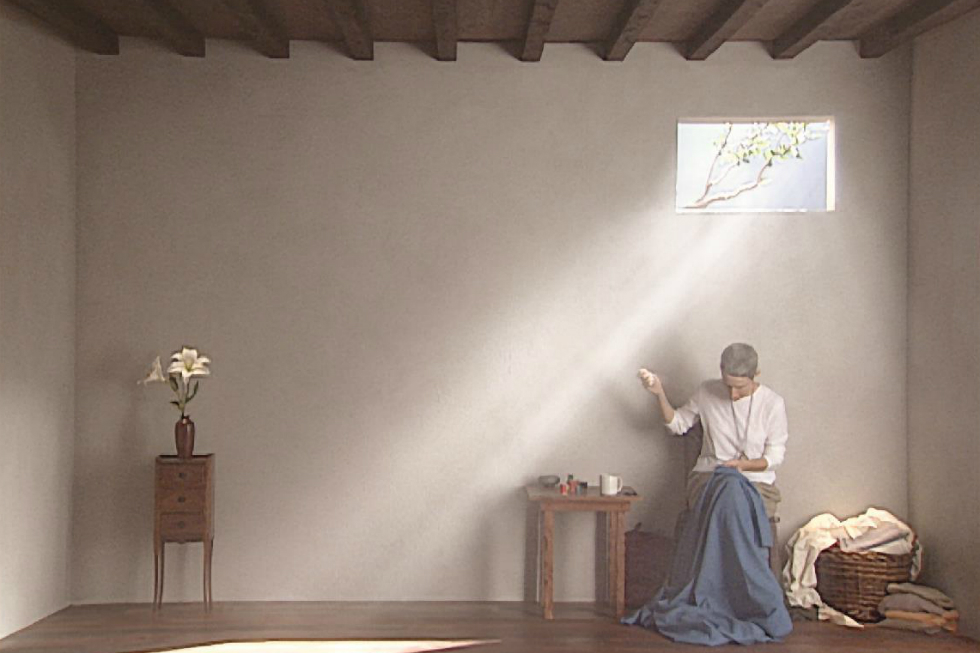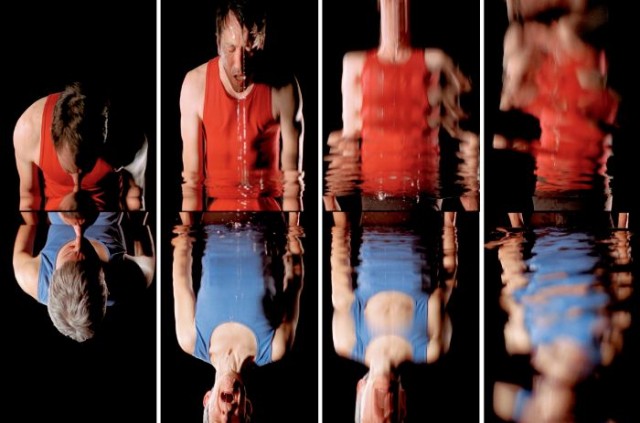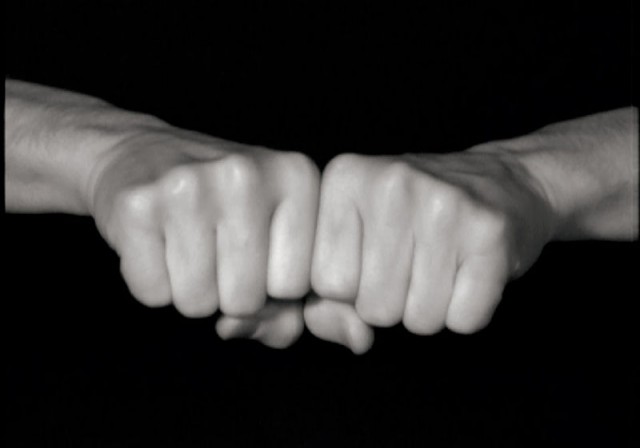“Transcendence and the desire for human connection are integral”… ARTIST ROOMS On Tour: Bill Viola

Ruth Dillon spends time with an intense selection of Viola’s moving image works, currently on show in Gloucestershire, and is impressed by the scope and complexity of the artist’s vision…
Bill Viola (born 1951) has long been recognised as one of the most influential video and sound installation artists of his generation. His oeuvre moves between states of the sublime and the spiritual; his elaborate art installations heralding a real shift in practice from hard-edged performative video to the experiential, rooted in the landscapes of the human condition.
With a career spanning over 40 years, Viola’s early works ensured the medium of moving image and video would not be relegated to the lost and found of art history. Today, we accept video art as a bona fide art form, a type of technological ‘plastic art’, and it cannot be denied that Viola is a pioneer.
Body artists, such as Dennis Oppenheim, Terry Fox and Vito Acconci, informed the performative approach Viola explored in his art school days in 1970s New York. The unknown was a unique element within the structure and process of their art. After working with Acconci, plus Nam June Paik and Bruce Nauman as a technical director at Italian video studio Art/tapes/22 (1974-76), Viola moved away from a somewhat formal, scientific and pragmatic approach to a more reductive yet honest portrayal of the human condition.
You can currently see three key Viola films at The Wilson, Cheltenham Art Gallery, thanks to the world-class ARTISTS ROOMS programme: a huge touring collection of contemporary art (estimated at £100 million) donated by reputed British art collector and curator Anthony D’Offay in 2008 to National Galleries of Scotland and Tate. Since 2009, there have been 120 ARTISTS ROOMS exhibitions, which have engaged local children in producing art works in response to the international artists featured.
Sophie Wilson, exhibitions manager at The Wilson who liaised with me during my recent visit, stated that the gallery was “…transformed by [Viola’s] installation pieces. Having exhibitions of this calibre at The Wilson is an exciting demonstration of how The Cheltenham Trust is able to offer a wide variety of cultural activity for local audiences to enjoy.”

Transformed for sure, Viola’s work lends itself to pretty much any space, and the three works displayed really bring a new articulation of artistic language to the people of Cheltenham.
Specifications accompany Viola’s pieces so there is no margin for any external elements interrupting the inherent conceptual dialogues. Catherine’s Room (2001) and Four Hands (2001) sit adjacent to one another, hanging at eye level, whilst Surrender (2003) hangs like a signature engulfing the dark space and drawing the spectator to enter what at first seems like an Olympian archetype of human proportions.
Surrender, a diptych double plasma split screen display, presents a woman and man in moments of anguish. The work is shot from their reflections in water, creating a mirrored image. At times, their subtle slow motion movements are poignant, laboured and terse. Each is a reflection of the other, submerging themselves into water and on re-emerging drawing a seemingly life affirming breath. Spiritual references may be drawn (analogies with baptism are the most obvious); however, aligning Viola’s piece within a purely Christian framework is somewhat overlooking the integrity of the work.
These are spiritual, not religious, artworks. Transcendence and the desire for human connection seem to be integral to Surrender. Viola has spoken of how we as humans interact, and the energy that flows between us, separated yet desiring to connect on both the emotional and physical levels. The intensity therein can be related to any lovelorn soul or unrequited love affair, or even that secret crush whose presence can turn your soul to jelly… Dominant themes of the untouchable yet desired make the work very easy to relate to.

Catherine’s Room, a color video polyptych on five LCD flat panels, seems to present a woman at different times of the day. Viola was inspired by 14th century artist Andrea di Bartolo’s Predella Saint Catherine of Siena and Four Mantellate (1428): painted panels or sculptures that founded a platform upon which an altar rested. Viola’s interpretation is crisp, sharp and echoes the Bartolo style, which is typical of the Siena school.
Time is required to absorb Viola’s work. In such a fast-paced world, Catherine’s Room forces the spectator to slow down and absorb the imagery presented, encouraging a contemplative engagement. One cannot rush the experience, and in this process one becomes an embodiment of the transcendental via Viola. A very personal journey is shared, one cannot help but reflect on the daily routine and practices most humans experience.
The five LCD screens portray a woman at different times of the day, in different mental and active states. In the first scene, Dawn casts light through a window; outside a tree’s branch suggests a season. The scenes switch from stillness and focus to acts of care, reflection, devotion and repose; from the first scene of a woman practicing yogic salutations, to the last scene that brings the daily cycle to its natural conclusion. Tempered order and moments of resistance to frustration create a manicured calm. Subtle energies are projected to the spectator through the muted, tonal landscapes of the rooms. Within each image, layers of meaning suggest a journey through the day, the seasons and ultimately life itself.
Four Hands, a black-and-white video polyptych on four LCD flat panels, depicts three generations of family. Each hand forms mudra gestures. The mudra is historically used in iconography of Buddhist and Hindu art (perhaps a reference to Viola’s time spent studying Buddhism in Japan (1980) with Zen Master Daien Tanaka). Mudras are also used within tantric practices to enable the flow of energy and also as a representation of consciousness to embody states such as fearlessness, wisdom and knowledge. A silent communication is gestural, evoking a response that is not easily translated into words.
The young hands are sure, strong and supple… whilst the older hands are imperfect, gentle with considered movements that imply confidence. As the eye moves along the plinth the tender fingertips presented are supple and slip between graceful locking motions and smooth dignified expressive poses. Meta-narratives implicit within all works could be easily overlooked; with Four Hands, the personal landscapes of life’s journey are apparent. Silent communication transgresses spoken language and within the movements and gestures age, experience and wisdom is seemingly conveyed.
Ruth Dillon
With thanks to Sophie Wilson
In memory of Becs Andrews, award-winning stage designer and visual artist, friend and luminary of the international arts scene
See ARTIST ROOMS On Tour: Bill Viola at The Wilson, Cheltenham Art Gallery, Gloucestershire, until 7 February 2016 – free entry
More on ARTIST ROOMS here
Also on display at The Wilson: Jerwood Drawing Prize, until 24 January 2016; Audrey Hepburn: Portraits of an Icon, until 14 February 2016
All images courtesy Bill Viola, Kira Perov, ARTIST ROOMS Tate and National Galleries of Scotland





